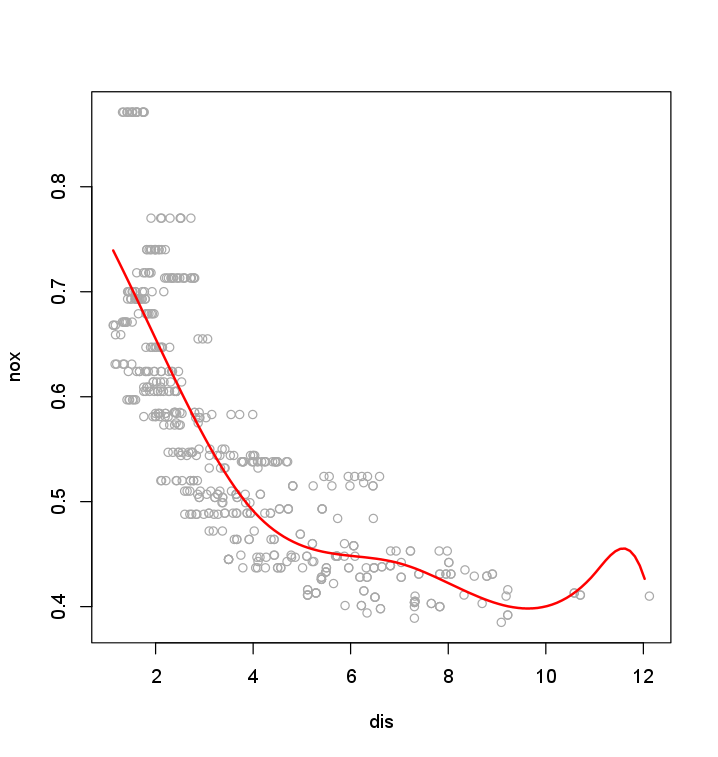Questions
Some of the exercises are not tested by Dodona (for example the plots), but it is still useful to try them.
-
Use the
bs()function to fit a regression spline to predictnoxusingdis. Place knots at the values4,7, and11. Store the model infit.bs.Try to replicate the following figure:
- Create a scatterplot of
noxvsdisusing all the data. - Create a sequence
dis.gridof values ranging from the lowestdisvalue in the data to the highestdisvalue observed, in steps of0.1. - Using the model
fit.bs, predictnoxfor the entire sequence. Store the result inpreds. - Add the predictions
predson the plot.

- Create a scatterplot of
- Now fit a regression spline for a range of degrees of freedom (3 to 16),
and report the resulting RSS in a vector
rss. Don’t overwrite your solutionfit.bsfrom question 4.- Store the 14 RSSs in the variable
rss.Initialize the vector
rssas a vector of length 16 with valuesNA. If you would like to plot the RSS, exclude the first 2NAvalues withrss[-c(1, 2)].
- Store the 14 RSSs in the variable
- Perform 10-fold cross-validation in order to select the best degrees of freedom on this data.
- Set a seed of 1. Store the 14 test errors in the variable
deltas.bs. Don’t overwrite your solutionfit.bsfrom question 4. You can ignore the warnings.Initialize the vector
deltas.bsas a vector of length 16 with valuesNA. If you would like to plot the CV test error, exclude the first 2NAvalues withdeltas.bs[-c(1, 2)]. - What is the optimal degrees of freedom? Store the answer in
df.min.bs.
- Set a seed of 1. Store the 14 test errors in the variable
Assume that:
- The
MASSlibrary has been loaded - The
Bostondataset has been loaded and attached - The
bootlibrary has been loaded - The
splineslibrary has been loaded